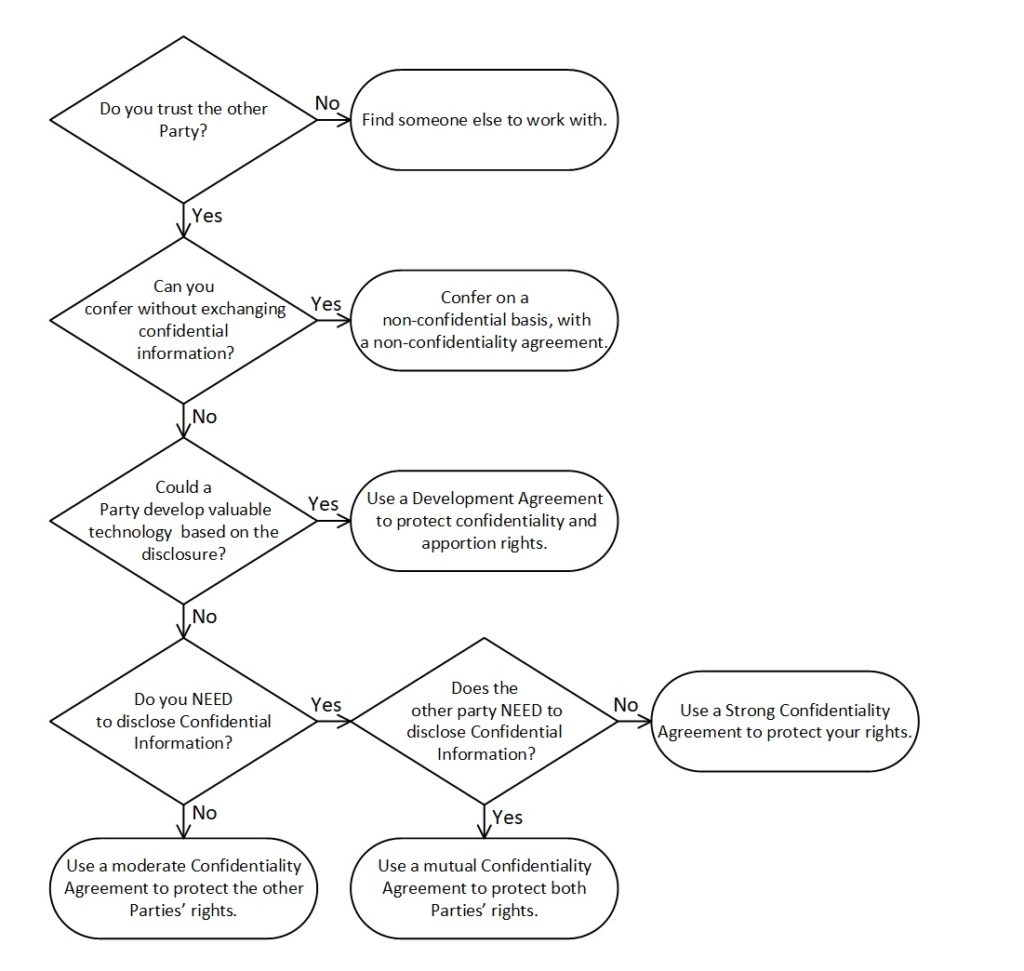June 5, 2019
Form-seekers and Non-disclosure Agreements
Just as physicians have their problems with prescription-seekers, lawyers have similar problems with form-seekers — clients who call up requesting the lawyer to send them a form so that they can fill it out themselves.
The most common request for intellectual property lawyers is an NDA — a non-disclosure agreement. While most NDAs are very simple, some professional judgment actually goes in to selecting the right starting point. Most importantly, does the client even need to exchange confidential information?
Other points to consider include the following two questions: Is the client looking to make a protected disclosure of its own information, or trying to induce a third party to make a disclosure of its information? The level or protection needed will likely be different. Is there a possibility that relevant technology may result from the disclosure? If so, a mere non-disclosure agreement won’t cut it — a development agreement that apportions rights in the technology is needed.
Here is a basic flow chart of the process for identifying the proper starting point for an NDA. Even at this basic level, the simple request for a form has at least five different outcomes.

The important thing to remember is that there is no one-size-fits-all NDA that will appease form-seekers — professional judgment needs to be used to determine the best type of agreement for any given situation. Strong IP protection requires more than correctly filling in the blanks in a form. Indiscriminately grabbing whatever NDA form is handy is a prescription for disaster.































